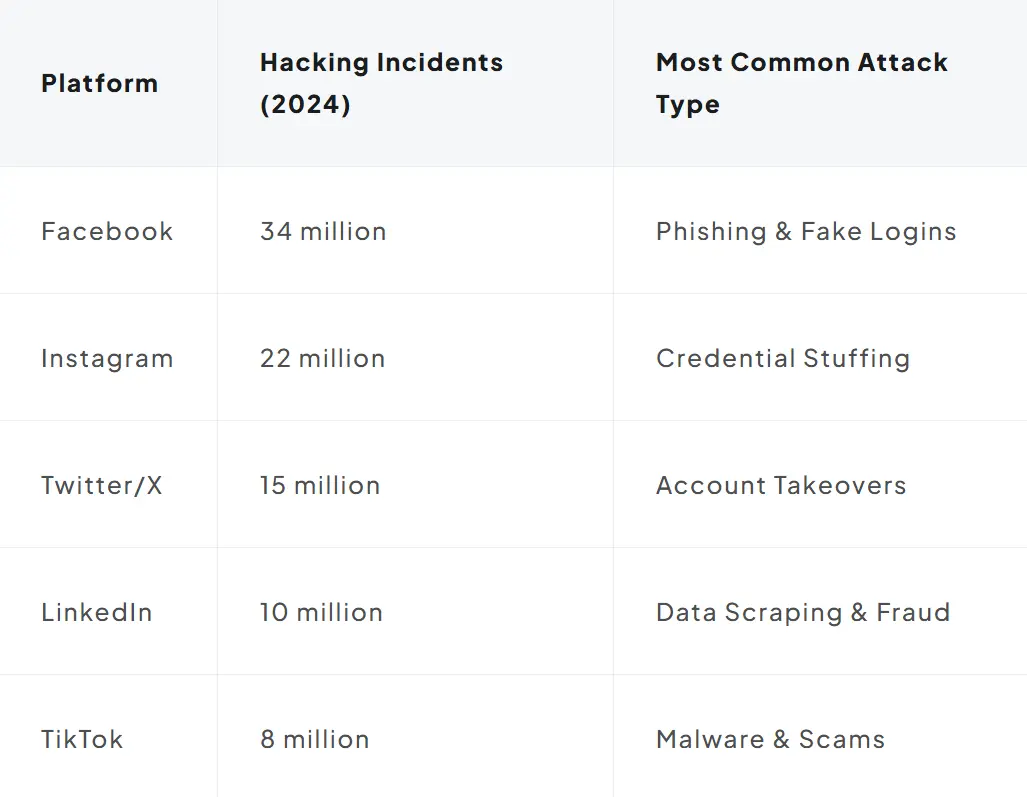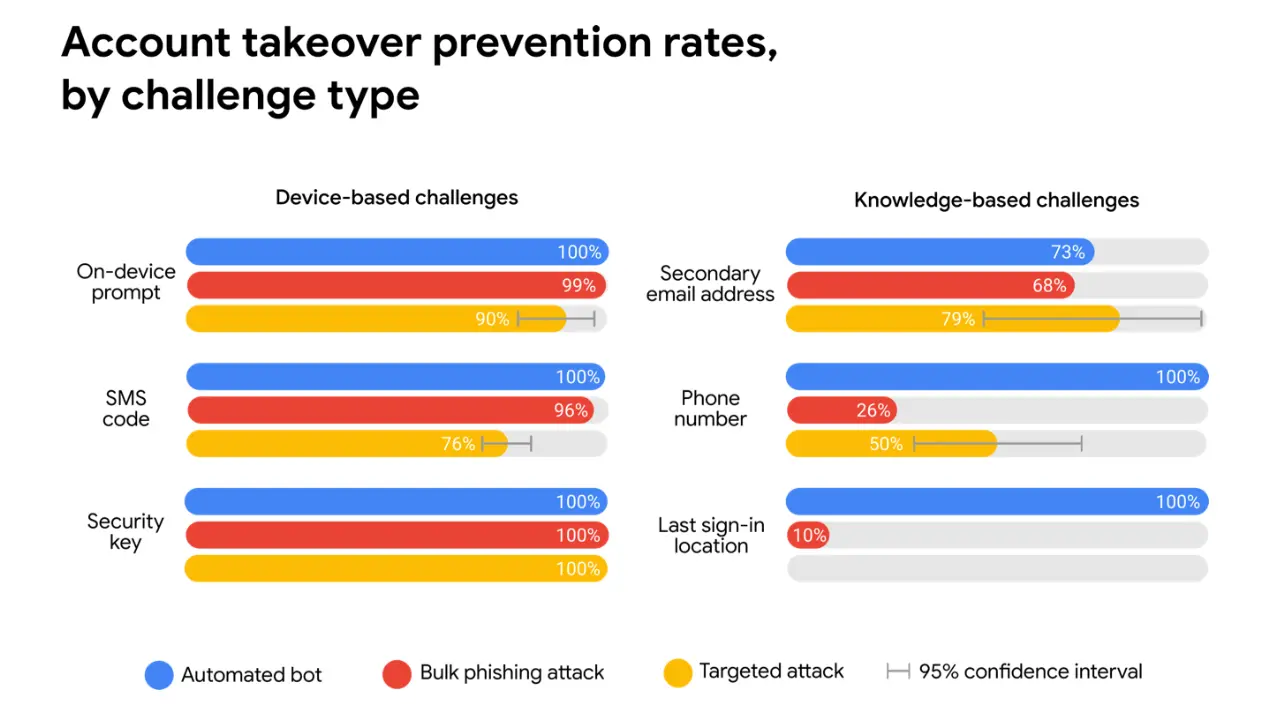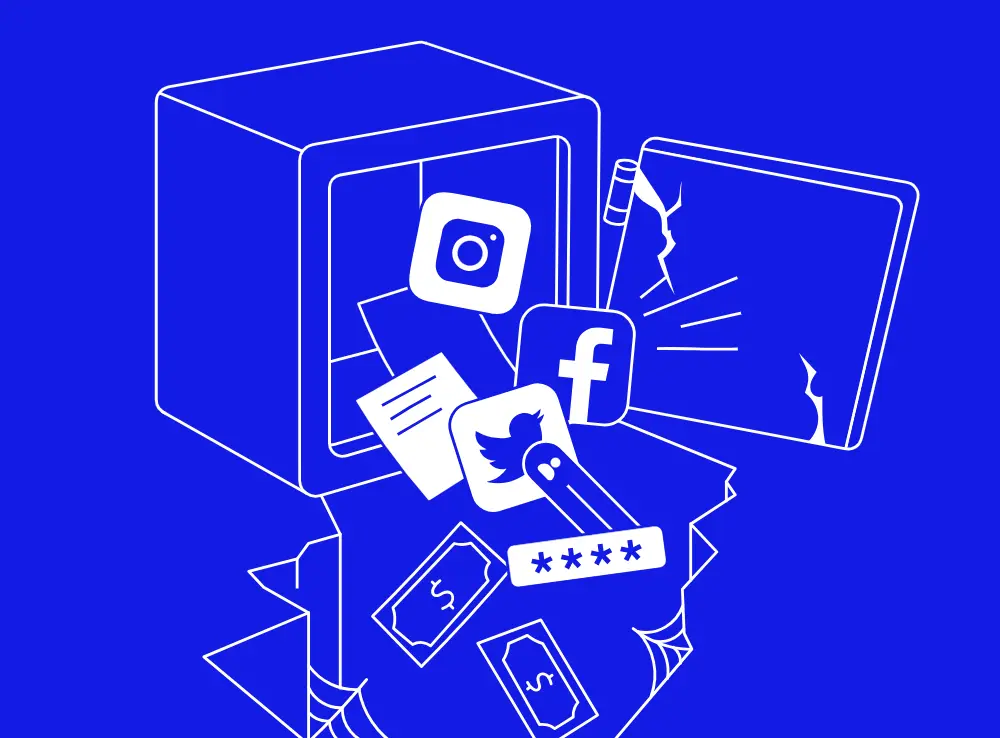The $4.88M Mistake of Ignoring Social Media Threats
The $4.88M Mistake of Ignoring Social Media Threats
Social media attacks have exploded at an unprecedented rate in recent years, forcing every business to take cybersecurity seriously. The internet has become a type of battlefield where criminals use all kinds of tactics to exploit vulnerable organizations like phishing, impersonation, brute force attacks, and other targeted attacks. No company is immune to these threats, regardless of size or industry.
Business leaders who ignore social media security face huge consequences, from massive financial losses to brand damage. That’s why organizations must implement robust protection strategies to protect their digital presence.
In this post, we'll explore the rapidly expanding social media threat landscape, examine the most dangerous attack types, and provide actionable defense strategies to protect your business from becoming the next victim.
Social Media Threat Landscape Explodes Across All Platforms
Did you know that phishing attacks have skyrocketed by 4,151% since ChatGPT was released in 2022?
Attacks are growing at an alarming rate, and according to Verizon's 2024 Data Breach Investigations Report, people increasingly fall for them. But this isn't unique to small businesses, we've seen huge companies like Microsoft's Xbox and Samsung fall victim to them too.
These attacks are increasingly targeting social media platforms, where businesses are most vulnerable. Many companies treat social media as "just marketing," but these platforms actually contain sensitive data that can fall into hackers' hands, like employee login credentials, customer communications, and proprietary business information.
If this happens to your business, there can be severe financial, reputational, and operational damages that you’ll have to pay for. We’ve seen how cybercriminals are increasingly targeting social media accounts. In fact, we’ve reported on six major hacks this past month alone:
- UEFA's Instagram account was compromised to promote a cryptocurrency meme coin, damaging the organization's reputation and defrauding followers.
- Riot Games' League of Legends Instagram fell victim to hackers who used the platform to promote cryptocurrency scams.
- Riot's VALORANT Instagram account was hijacked to spread similar cryptocurrency scams to their gaming audience.
- TRON DAO's X account was compromised and used to promote meme coin scams targeting cryptocurrency enthusiasts.
- The New York Post's X account was hacked to send direct messages inviting users to fake podcast appearances. When they agreed, they were given a physical address, potentially setting up victims for physical crimes. Thankfully, the scam failed.
- AJ Styles' X account was compromised through a SIM swap attack and used to promote a cryptocurrency scam.
This is precisely why you need to take online threats seriously and take action right now. The frequency and sophistication of these attacks is growing and it’s not stopping.
Types of Social Media Attacks: Nightmare Scenarios
Social media attacks come in many different forms, each designed to exploit specific vulnerabilities in your digital presence. We'll focus on the most common and effective methods that pose the greatest risk. Here’s a list of them:
Account Takeovers Threaten Complete Business Control
Account takeovers happen when hackers gain full control of social media accounts to hold them for ransom, scam followers, access private messages, or sell them to other criminals. These are the most common threats we see. In fact, according to Cropink, 20% of social media accounts face hacking attempts annually. And 80% of breaches happen because of weak or reused passwords across multiple platforms.

But not all accounts get hacked through brute force methods. Attackers also use more advanced techniques like what happened to AJ Styles.
AJ was a victim of SIM Swap where attackers tricked his phone carrier into believing he had lost his phone and needed a SIM replacement. Once they got the new SIM with AJ's phone number, they used it to request an X password change, getting the confirmation code sent to his phone. After gaining access, hackers used AJ's account to defraud users through a cryptocurrency scam.
Deepfake Profiles (Brand Impersonation and Fake Accounts)
Deepfake profiles are a dangerous form of brand impersonation that uses generative AI to create fake profiles realistic enough to trick users into thinking they're interacting with an official channel. These fake accounts are dangerous because they can operate undetected for months, gathering intelligence and building trust.
Attackers use these profiles to run scams, damage brand reputation, attempt to outrank the original profile in search results, or try to take down the real account through impersonation requests on social media platforms (although this isn’t common).
While most people don’t have to worry about deepfake profiles, C-level executives should be extremely careful. Most impersonation targets include CEOs, CFOs, CMOs, and CTOs who hold decision-making authority. Whaling attacks are very dangerous because they impersonate decision makers, facilitating approvals for payments to third parties (causing significant financial fraud).
Phishing Attacks
Phishing attacks are a form of social engineering that tricks or pressures people into revealing sensitive information. Attackers then use this information to take over accounts, steal identities, or commit fraud against your business and customers.
These attacks are relatively easy to identify because they usually come in the form of fake verification requests, impersonation of platform support, or phishing for information through direct messages. However, their simplicity is what makes them effective.
That said, modern phishing attacks have evolved beyond basic email scams. Criminals now use social media comments, direct messages, and even spoofed websites to harvest credentials and personal information from unsuspecting victims.
How to Prevent Social Media Attacks: Your Defense Strategy
Effective social media security requires multiple layers of protection working together. No single solution can address all threats, but combining proven strategies creates a robust defense that makes your business a harder target for cybercriminals.
The following strategies have helped thousands of businesses protect their digital assets. Use them to effectively protect your organization.
1. Access Control And User Management
User Access Management (UAM) controls who can access your organization's systems, data, networks, and social media accounts. Essentially, it ensures users have access to exactly what they need. Nothing more, nothing less. This principle of least privilege reduces your attack surface, limiting potential entry points for cybercriminals.
Proper UAM implementation is essential because it reduces your attack surface. If someone from your team gets hacked, it won't result in a domino effect across your organization. You'll also be able to quickly pinpoint weaknesses so you can address them before they're exploited.
To ensure you stay on top of your security, regularly review who has access to your accounts and remove users who no longer work with you or no longer need access. This ongoing deprovisioning prevents former employees or contractors from retaining access to sensitive business assets.
2. Monitoring and Threat Detection
There are two main types of monitoring tools that should be part of your security strategy: 1) social media monitoring tools for brand mentions and 2) social media security tools for monitoring account health and improving cybersecurity.
Social Media Monitoring Tools
Social media monitoring tools are software applications that track, analyze, and respond to conversations and mentions related to a brand, competitors, or specific topics across multiple social media platforms. These tools help businesses understand online conversations, measure brand sentiment, and identify trends.
We have an article about the best monitoring tools, read it for more details on improving customer experience and marketing strategies.
Social Media Security Tools
Social media security tools are software designed to protect individuals and organizations from online threats and risks associated with social media platforms. These tools focus on security instead of marketing metrics.
There are many different types of social media security tools. Some focus on monitoring content quality and health, while others focus more on sustainability like content backups and account recovery.
There are also social media security tools like Spikerz that offer more complete protection. On top of doing everything we just mentioned, they help businesses monitor their social media presence for suspicious activity like logins from unfamiliar locations, changes in account settings and user permissions, account takeovers, bot attacks, and phishing attacks.
So, what tool should you choose?
Choose the tools that better help your business achieve its goals. Consider your budget, team size, and specific security requirements when making your selection.
3. Employee Training and Awareness
One of the most effective ways to protect your business from social media threats is training your employees to spot telltale signs of phishing and social engineering attacks.
People are always the weakest link in any organization's security chain. That’s why we need to make sure our employees are well prepared to deal with any threat they may face.
The good news is that there are social media security training programs and phishing simulation exercises that help employees gain experience at discerning real messages from fake ones. These hands-on learning experiences build confidence and improve response times during actual attacks.
Also, your organization should have clear social media usage policies and guidelines. Most companies don't have written policies, resulting in people not knowing what's acceptable and what's not when using company assets.
4. Enable Two-Factor Authentication (2FA)
Not all 2FA methods are equally successful at preventing account takeovers. According to Google, the best way to protect your online accounts is using a security key. However, security keys aren't great options for teams because they require a physical USB key to login to accounts.

This creates the obvious problem of needing to be physically present to help team members login to your business accounts. Based on the same Google article, a better alternative is on-device prompts, but even those aren't ideal because you need the account owner to approve your logins.
This leaves us with an important question: what form of MFA or 2FA can businesses use?
The answer is simple: 2FA for teams.
2FA for teams is designed to help teams have centralized access to codes while ensuring that managers can revoke account access when someone leaves the organization or changes roles. This method balances security with operational efficiency.
The point is, you must have a form of 2FA or MFA. I can emphasize this enough, it’s essential to account security. In fact, Microsoft found that more than 99.9% of compromised accounts don't have MFA, which leaves them vulnerable to password spray, phishing, and password reuse attacks.
Make having 2FA mandatory across your organization. This single requirement can prevent the vast majority of account takeover attempts.
5. Incident Response Planning (Prepare For The Inevitable)
No matter how big your company is, how many resources you have at your disposal, and how knowledgeable you are about cybersecurity, there will always be attack vectors bad actors can exploit. We've seen this many times before. Just to name a few recent examples:
- Mr. Beast's TikTok Account hack
- Samsung X hack
- UEFA Champions League Instagram Hack
- Riot's LoL and VALORANT Instagram hacks
- Microsoft's Xbox Instagram and Facebook hacks
All these major hacks happened over the past couple of months alone. It's estimated that 1.4 billion social media accounts get hacked every month. For that reason, your business should have an incident response team ready to act.
An incident response team is a dedicated security team in charge of dealing with incidents as they happen. They create step-by-step response procedures for different attack types and implement them when breaches happen. If you don't already have one in your company, create one right now.
6. Technical Safeguards (Your Safety Net)
No organization is hack-proof. Things that we can't foresee happen. However, we can limit our attack surface as much as possible and backup our content so that if we lose access to our accounts and content gets deleted, we can quickly recover.
Here's what you should do regularly:
- Enable automatic updates for antivirus software and other applications you use for work.
- Regularly review third-party apps connected to your social media. If you don't use them anymore, remove them.
- Regularly review employees who have access to your social media accounts. If they no longer work with you or don't need access, remove them.
- Backup your social media content (you can use a tool like Spikerz to automatically take care of this).
- Create a recovery procedure for when you get hacked or find social media impersonators.
Conclusion
Social media threats have reached a critical point where ignoring them guarantees disaster. With phishing attacks surging 4,151% since 2022 and 1.4 billion accounts hacked monthly, your business faces an enemy that never sleeps.
The good news is that there are six critical areas you can focus on to protect your company: 1) access control, 2) monitoring systems, 3) employee training, 4) two-factor authentication, 5) incident response planning, and 6) technical safeguards. All these strategies work together to create multiple layers of protection that make your business a harder target.
Your choice is simple: invest in protection now or pay the catastrophic price later. Every day you delay gives cybercriminals another opportunity to destroy everything you've built.
Start protecting your social media presence with Spikerz today and transform your biggest vulnerability into your strongest competitive advantage.



